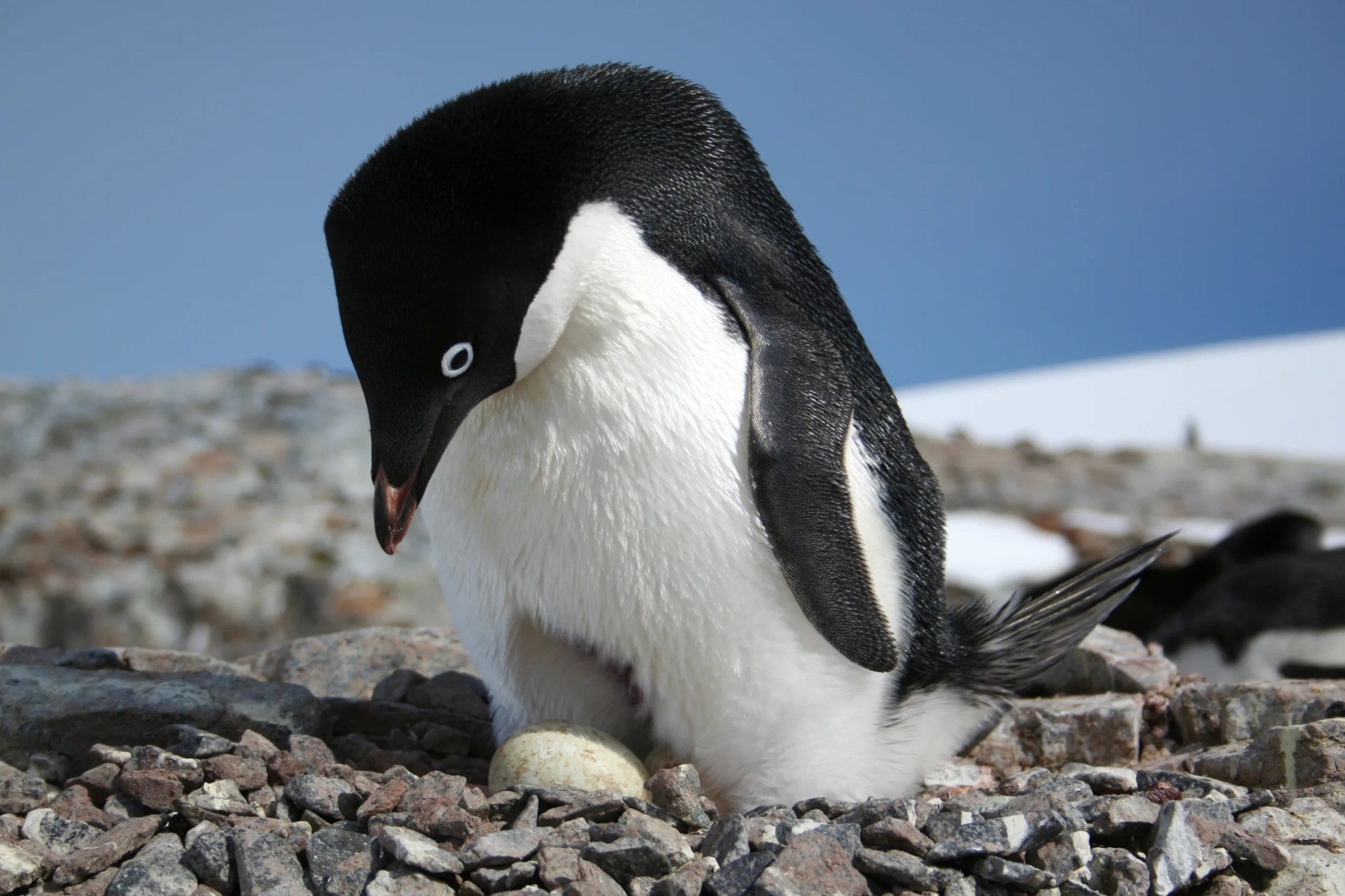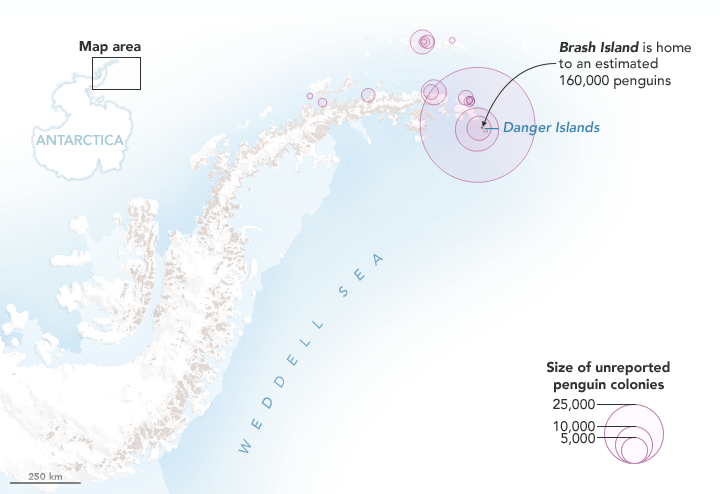Satellites detect undiscovered penguin populations
Penguin populations are a key environmental indicator of overall ecosystem health that help guide Antarctic conservation policy. When researchers using Landsat imagery detected a previously unknown colony of Adélie penguins off the coast of Antarctica, the robustness of the colony helped inform new species abundance and distribution models in the region, and led to the revision of the boundaries of a regional protected area.
Data Sources: Landsat, Worldview
Publications
Borowicz, A., P. McDowall, C. Youngflesh, T. Sayre-McCord, G. Clucas, R. Herman, S. Forrest, M. Rider, M. Schwaller, T. Hart, S. Jenouvrier, M. Polito, H. Singh, and H. Lynch. "Multi-modal survey of Adélie penguin mega-colonies reveals the Danger Islands as a seabird hotspot." Scientific reports 8, no. 1 (2018): 3926.
Che-Castaldo, C., S. Jenouvrier, C. Youngflesh, K.T. Shoemaker, G. Humphries, P. McDowall, L. Landrum, M.M. Holland, Y. Li, R. Ji, and H.J. Lynch. 2018. Pan-Antarctic analysis aggregating spatial estimates of Adélie penguin abundance reveals
Schrimpf, M., R. Naveen, and H.J. Lynch. 2018. Population status of the Antarctic shag Phalacrocorax (atriceps) bransfieldensis. Antarctic Science: 1-9.
Schwaller, M. R., H. J. Lynch, A. Tarroux, and B. Prehn. "A continent-wide search for Antarctic petrel breeding sites with satellite remote sensing." Remote Sensing of Environment 210 (2018): 444-451.
Humphries, G. R. W., C. Che-Castaldo, P. J. Bull, G. Lipstein, A. Ravia, B. Carrión, T. Bolton, A. Ganguly, and H. J. Lynch. Predicting the future is hard and other lessons from a population time series data science competition. Ecological Informatics 48 (2018): 1-11.
< Back to: A Year in Review | Next Discovery: Warm ocean waters off Greenland put glaciers at more risk >
































